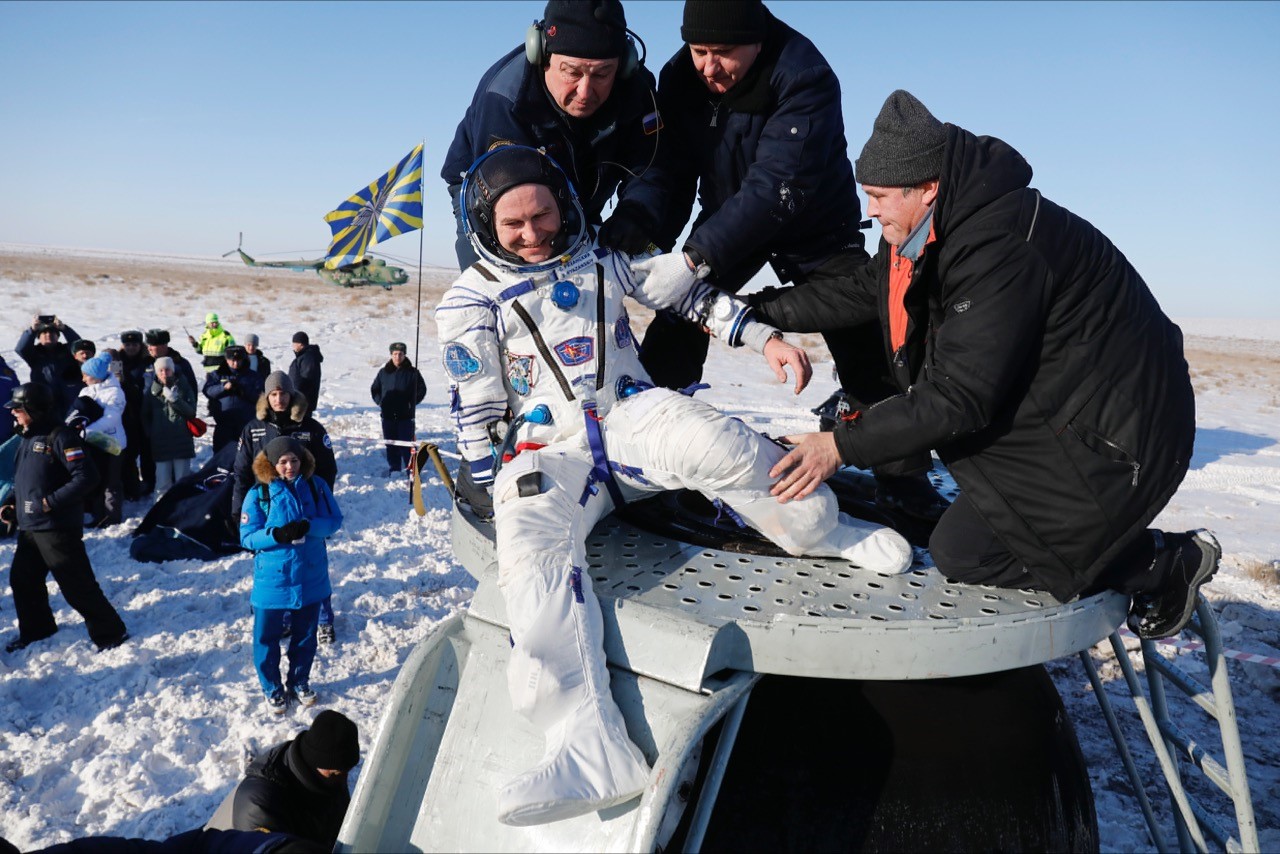Soyuz MS-05 trio lands in Kazakhstan after 138-day ISS stay
/Returning from the black of space to the cold of Kazakhstan, three International Space Station crew members have returned to Earth after 138 days and 17 hours in space. Soyuz MS-05 landed at 2:37 p.m. Kazakh time (3:37 a.m. EST / 08:37 GMT) Dec. 14, 2017.
NASA astronaut Randy Bresnik, European Space Agency astronaut Paolo Nespoli, and Russian cosmonaut Sergey Ryazanskiy landed on the Steppe of Kazakh in their Soyuz MS-05 capsule, not far from where they launched to space some five months earlier on July 28, 2017. Temperatures were hovering around minus 12 degrees Celsius when the trio was recovered from the capsule – a difference of some 15 degrees Celsius from the interior temperature of the ISS.
Six hours earlier, at 9:02 p.m. EST (02:02 GMT Dec. 14), the hatches between Soyuz MS-05 and the space station’s Rassvet module were closed after a ceremonial farewell with the three space flyers staying behind. Russian cosmonaut Alexander Misurkin and NASA astronauts Mark Vande Hei and Joe Acaba will remain aboard the outpost through February 2018.
Undocking took place at 12:14 a.m. EST (05:14 GMT) Dec. 14. The docking mechanism springs pushed the spacecraft away from the outpost. After several seconds, the capsule fired its thrusters to push it away from the station even faster.
Just over 2 hours later, Soyuz MS-05 performed a 4.5-minute deorbit burn. This slowed the spacecraft by about 128 meters per second – just enough to cause its orbit to intercept with the atmosphere to begin re-entry.
A few minutes before entry interface, the three main parts of the Soyuz – the orbital module, descent module, and service module – separated. Only the capsule with the three crew members is designed to survive.
Some 100 kilometers above Earth, the Soyuz and the trio inside blazed through the atmosphere traveling nearly 8 kilometers per second. Seven minutes later, the spacecraft slowed to just 2.2 kilometers per second. The space flyers aboard felt about 4.5 times the force of gravity at this point.
Once the Soyuz was deeper in the atmosphere and its velocity slowed enough, a series of parachute deployments began. First, a pilot chute deployed to pull out the drogue chute. This slowed the vehicle down to a mere 280 meters per second.
Finally, the main parachute was deployed. Its 1,000-square-meter surface area slowed the Soyuz down to about 6.5 meters per second.
However, this was not enough. About one meter above the ground, “soft” landing jets were fired to cushion the impact of landing. Astronauts in the past have described this event as being similar to a car crash.
After landing, the parachute began to drag the spacecraft onto its side before pyrotechnics cut the chute, as planned.
Once stable, Russian search and recovery teams moved in via helicopters and all-terrain vehicles to extract the crew. First out was Commander Sergey Ryazanskiy, followed by Paolo Nespoli and then Randy Bresnik. Each was carried to a nearby couch and given water. They were also able to call family members.
It wasn’t long before the crew was taken to a nearby inflatable medical tent for further evaluation. Once that was done, each space flyer was placed in a helicopter to be flown to nearby Karaganda, Kazakhstan. There they will part ways to their respective space agencies – Bresnik to Houston, Ryazanskiy to Moscow, and Nespoli to Cologne, Germany.
Bresnik finished his second spaceflight. Between his first flight aboard the Space Shuttle Atlantis’ STS-129 mission in 2009 and this long-duration mission, he has logged some 150 days in orbit.
Ryazanskiy is also on his second spaceflight. He first flew to orbit in 2013 as part of Expedition 37 and 38. His career total now stands at 306 days.
Finally, Nespoli is on his third spaceflight. His first flight into space was during the STS-120 mission in 2007, which saw the addition of the Harmony module to the ISS. He ventured into orbit again in 2010 and 2011 as part of Expedition 26 and 27. At the conclusion of that long-duration flight, he took the first pictures of a space shuttle docked to the outpost from his departing Soyuz spacecraft. His total time in space stands at 313 days.
NOTE: While this article was written by Derek Richardson, it was originally published at SpaceFlight Insider. Feel free to head over there to read all the stuff they write about!







